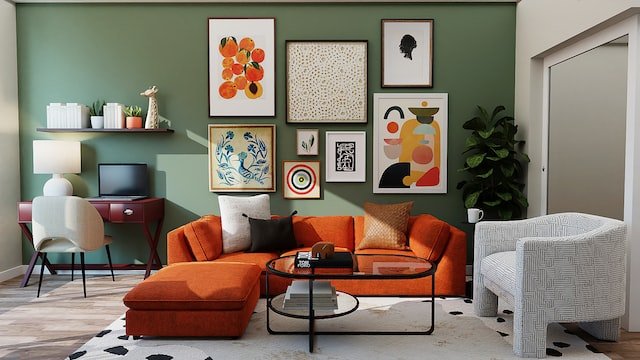Shopping at the right furniture shop gwynedd is more than just picking out stylish pieces; it’s about finding items that complement your lifestyle and meet your specific needs. Whether you’re furnishing a new home, updating your current space, or simply looking for a few key pieces, making informed decisions can enhance both the functionality and aesthetic of your living environment. Here’s a comprehensive guide on how to select quality furniture pieces that fits your lifestyle and needs.
1. Assess Your Lifestyle
Consider Your Daily Routine
Think about how you and your family use your home on a daily basis. If you frequently host gatherings, prioritise versatile and comfortable seating options. For those with busy schedules and little time for upkeep, opt for furniture that is easy to clean and maintain.
Family Size and Dynamics
Consider the number of people living in your home and their activities. Families with young children or pets should look for durable, stain-resistant materials. Multi-functional furniture can be a smart choice for smaller spaces or for those who need to accommodate various needs.
2. Define Your Functional Needs
Storage Solutions
Evaluate your storage requirements. If you have a lot of items to store, choose furniture with built-in storage options, such as ottomans with compartments, beds with drawers, or cabinets with adjustable shelves.
Work and Study Areas
For those working or studying from home, invest in ergonomic office furniture that enhances productivity and comfort. A good desk, supportive chair, and adequate lighting are essential for creating a functional workspace.
Multi-Functionality
If you’re working with limited space, opt for multi-functional furniture that can serve more than one purpose. Examples include sofa beds, expandable dining tables, and modular shelving units.
3. Match Furniture to Your Space
Room Dimensions
Measure your space carefully before purchasing furniture. Ensure that the pieces you choose fit comfortably within the room without overcrowding. Use a tape measure and consider scale to avoid buying items that are too large or too small for the area.
Layout and Flow
Think about how furniture placement will affect the flow of the room. Ensure there is enough space for movement and that the arrangement facilitates easy access to different areas. Consider how the furniture will interact with existing architectural features and design elements.
4. Choose Furniture That Reflects Your Style
Personal Style Preferences
Select furniture that aligns with your personal style and complements your existing decor. Whether you prefer modern, rustic, traditional, or eclectic designs, choose pieces that reflect your taste and create a cohesive look throughout your home.
Colour and Texture
Consider how the colours and textures of the furniture will interact with your room’s palette. Neutral tones offer versatility and can be easily accessorised with colourful accents, while bold colours or patterns can make a statement and become focal points in a room.
5. Prioritise Comfort and Quality
Comfort First
Comfort should be a top priority, especially for pieces like sofas and chairs that will see frequent use. Test furniture in-store to ensure it meets your comfort standards. Sit, lie down, or try out the piece to assess its suitability.
Durability and Quality
Invest in high-quality furniture that is built to last. Look for solid construction, durable materials, and reputable brands. Examine the craftsmanship, including joints, seams, and finishes, to ensure longevity and performance.
6. Budget Wisely
Set a Realistic Budget
Determine how much you are willing to spend on each piece of furniture. While it’s important to stick to your budget, prioritise quality and functionality to ensure you get the best value for your money.
Shop Smart
Look for sales, discounts, or financing options that can help you manage your budget without compromising on quality. Consider investing in fewer, higher-quality pieces rather than filling your home with lower-quality items.
7. Consider Future Needs
Adaptability
Think about how your needs might change over time. Choose furniture that can adapt to different uses or evolving needs. For example, modular furniture can be reconfigured as your space or requirements change.
Timeless vs. Trendy
While it’s tempting to choose trendy pieces, focus on timeless designs that will remain appealing over the long term. You can always update your decor with accessories and accents that reflect current trends.
8. Test Before You Buy
In-Store Experience
Whenever possible, visit furniture stores to see and test the pieces in person. Sit on chairs, test mattress comfort, and assess the quality of materials. This hands-on approach can help you make more informed decisions.
Online Research
If buying online, read reviews, check ratings, and review detailed product descriptions. Many online retailers offer virtual tools to help visualise how furniture will look in your space.
Conclusion
Choosing furniture that fits your lifestyle and needs involves careful consideration of your daily routines, functional requirements, space dimensions, and personal style. By prioritising comfort, quality, and practicality, you can create a living environment that enhances your well-being and reflects your individuality. Remember to balance your budget with your desire for quality and style, and always test furniture before making a purchase. With these tips, you’ll be well on your way to furnishing a home that is both beautiful and functional, tailored perfectly to your lifestyle.






